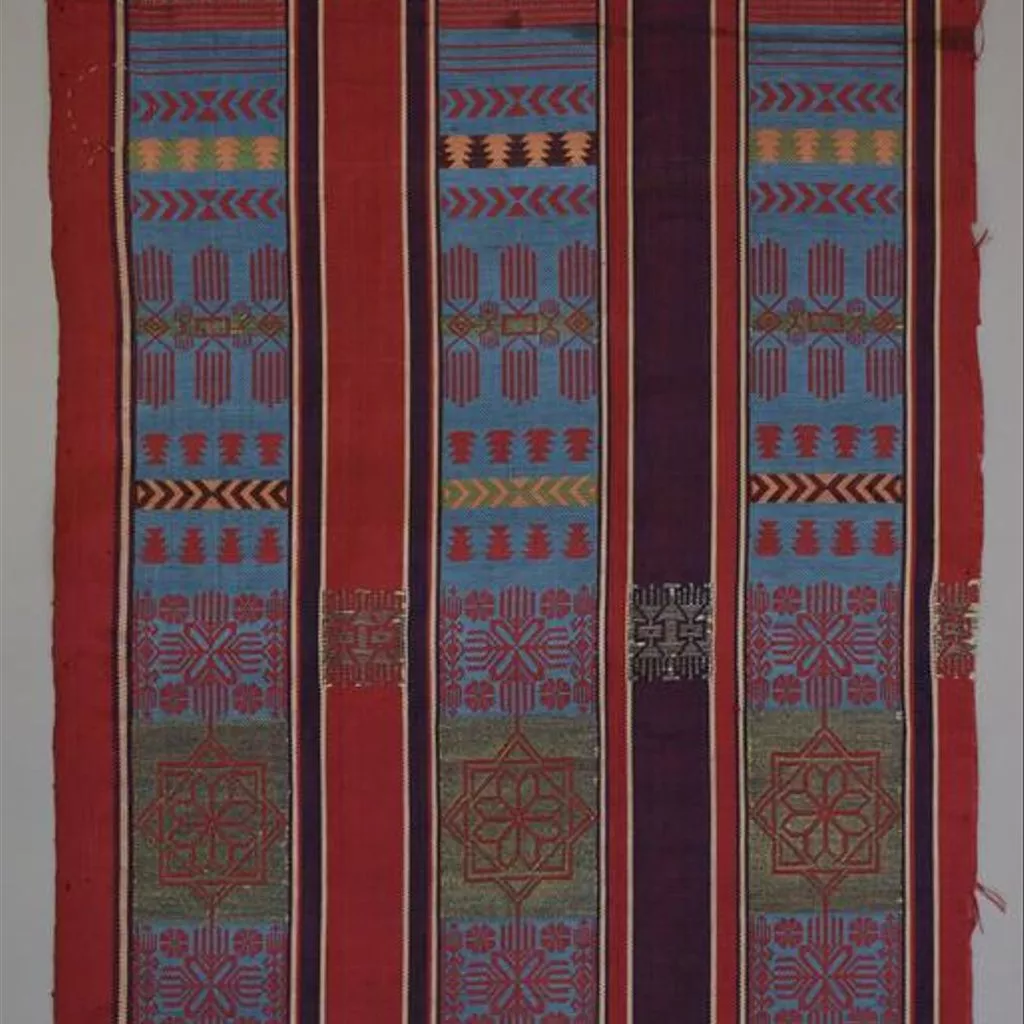1850~, Tunisia
1850~, Tunisia
- Identifier
- 808&A-1852
- Collection
- Technique
- Embroidery 100%
- Embroidery 94%
- Embroidery 92%
- Depiction
- Geometrical motif 71%

- Geometrical motif 71%

- Geometrical motif 71%
- Production time
- Production place
- Type of object
Description
From about 1840 a collection of objects was formed for the Government School of Design. It was later expanded with objects purchased from the Great Exhibition. All had been selected for their appropriate use of materials, excellent workmanship or well-designed decoration. A new museum was established and rooms were provided for it at Marlborough House, London, where it was to be available to students, manufacturers and the general public to study. [27/03/2003] Brocaded silk sash, cut into two pieces, Tunisia, ca. 1850. Object Type
This is part of a long, silk sash which would have been folded lengthways, wound several times around a Tunisian man's waist and then secured by tucking the loose end between the many layers. Not only was it a colourful accessory but small objects, such as a purse, papers or a dagger, could be kept in the folds. This was particularly useful because there were no large pockets in the man's garments.
Materials and Making
Although silk was widely used in urban workshops in Tunisia, it was not produced in North Africa and had to be imported in a raw state from other Mediterranean countries. It was cleaned, carded and spun by local women, dyed by skilled craftsmen and then hand-woven by a man using a wooden loom. The metal thread used to highlight details of the pattern was produced by men because tradition said that women's hands tarnish gold. There may be truth in this tradition because the oils on women's hands are known to be more acidic at certain times in their menstrual cycle.
Historical Associations
This sash was exhibited at the Great Exhibition of 1851 and was purchased by the Museum as an example of a tasteful and well-balanced design.




